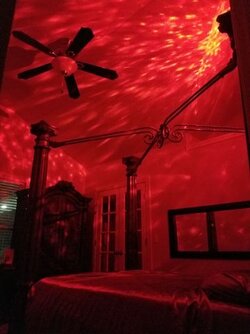A long winded rant...but you asked for it - hehe!

For my personal situation when setting up my network, it was more about reliability than anything else. My house is 3,500 sqft on 1 floor. The internet connection (and hence the traditional router/WiFi device) is on the SE side of the house. About midway through the house, WiFi connection would be spotty. WiFi was terrible on the NW side of the house.
This was a number of years ago, with pretty low data usage (as the network was not reliable enough to be used).
My first attempt to improve this was using MoCA (see the link in my signature). This worked great for me, and I took an old router/WiFi device, put it in access point mode, and was able to provide internet throughout the house. However, as the two router/WiFi devices were not "connected" to each other, I had different SSIDs for each side of this house.
This worked out better...and the network started to be used more heavily. And now we were at different limitations that the commercial items could do for me. This was very similar to what you were facing...I stared out my smart house with WiFi devices, because that is what I understood. As I learned more about the security pitfalls of having WiFi IoT devices, having to add "security patches" when I really don't know much about the company making the device, and learning that a DoS attack was conducted through hacks into these types of WiFi devices...I wasn't comfortable keeping them on the same network that I use to do my online banking at home.
However, my family was "addicted" to the improved reliability of the network in the house.
I poked around looking at Mesh WiFi type systems...even asking this group their thoughts on an Orbi device. ATM convinced me to look into Ubiquity UniFi products...and the rest is history.
My UniFi network has grown since then...with the 10 Gbps backbone being the latest in the past 1.5 years or so.
I used to backup my PC to a hard drive that was in the PC and think I was safe.
Now, my PC, Wife's PC, stepson's PC, etc. backup to a RAID array in one of my NAS devices...and this RAID array NAS backups to a second RAID array NAS device. While this is still not 100%, it's a much better situation than relying on a single hard drive to backup all my stuff.
Now - back to the WiFi IoT stuff. Do some Google-Fu and look at the security issues with these (past and potential)...especially keeping them on the same network that you access your financial information on (assuming you use online accounts for banking, investments, etc.)
At a MINIMUM you need to put these devices on a separate VLAN...so that their internet facing capabilities do not directly connect to your main network. I am not sure if your current hardware can do this...but I am 100% sure that the UniFi hardware can. It's easy to manage, and has been 100% rock solid stable for me. I am not sure what the dorks who complain on the internet are doing, but I follow the UniFi guides and the stuff just works...and is stable as hell.
And now my family is even more addicted to the speed and reliability.
My Wife (a school teacher) had to teach classes virtually at the start of COVID. My stepson had to take classes virtually during the same time. My youngest daughter was living with me while she was just starting her first real job...she had to work from home. The UniFi network swallowed all of these bandwidth and usage without any issues...not even a minor one.
I never planned for this scenario...I just built out my network like a good Overlockers.com person would...adding stuff that I had no real use-case for...but then life happened and I had a use case.
A long winded rant...but you asked for it - hehe!

Also - check out the Smart Home link in my signature. Z-Wave and ZigBee are far superior to anything that you can get with a WiFi device...and much more secure. I have found a new home with Hubitat...it's been a great experience for me. My basic smart house strategy is:
- Locks (including garage doors) are Z-Wave...for reliability and security
- Switches, outlets, etc. are Z-Wave for reliability
- Sensors (motion sensors, leak sensors, etc) are ZigBee for their speed of response
- Pretty color changing bulbs, lights, etc. are ZigBee (Philips Hue is ZigBee) for the same reason
I have 1 WiFi outlet that I have kept. I use that to automate the on/off of my exterior Christmas Lights...it doesn't seem to mind our mild Florida winters...and they are cheap enough that I can throw it away if it breaks and get a new one.

